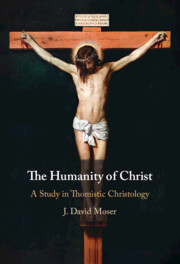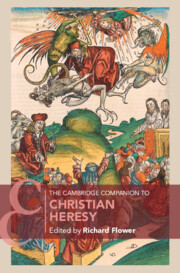Refine search
Actions for selected content:
151 results
Chapter 10 - Creating the People
- from Part III - ‘One of Us’
-
-
- Book:
- 'The People' and British Literature
- Published online:
- 11 December 2025
- Print publication:
- 11 December 2025, pp 159-174
-
- Chapter
- Export citation
Introduction to Volume I
-
-
- Book:
- The New Cambridge History of the English Language
- Published online:
- 30 October 2025
- Print publication:
- 30 October 2025, pp 14-24
-
- Chapter
- Export citation
Potsherd pavements and regional interaction in medieval northern Yorùbáland, Nigeria
-
- Journal:
- Antiquity , First View
- Published online by Cambridge University Press:
- 23 October 2025, pp. 1-7
-
- Article
-
- You have access
- Open access
- HTML
- Export citation
The Widowers’ Two Plights: Toward a Cultural History of Bereaved Husbands
-
- Journal:
- Comparative Studies in Society and History , First View
- Published online by Cambridge University Press:
- 17 October 2025, pp. 1-25
-
- Article
-
- You have access
- Open access
- HTML
- Export citation
1 - ‘Another Sort of Treason’
-
-
- Book:
- Law and Constitutional Change
- Published online:
- 26 September 2025
- Print publication:
- 16 October 2025, pp 11-26
-
- Chapter
-
- You have access
- Open access
- HTML
- Export citation
The Social Life of Wax in the Premodern Maghrib
-
- Journal:
- Comparative Studies in Society and History , First View
- Published online by Cambridge University Press:
- 13 October 2025, pp. 1-21
-
- Article
-
- You have access
- Open access
- HTML
- Export citation
Chapter 38 - The Atlantic and the Americas
- from Asia and the Americas
-
-
- Book:
- The Cambridge Guide to Global Medieval Travel Writing
- Published online:
- 03 October 2025
- Print publication:
- 02 October 2025, pp 672-685
-
- Chapter
- Export citation
Bad Grammar: Teachers, Crime, and the Law in Late Medieval and Early Modern England
-
- Journal:
- History of Education Quarterly / Volume 65 / Issue 4 / November 2025
- Published online by Cambridge University Press:
- 23 September 2025, pp. 517-535
- Print publication:
- November 2025
-
- Article
-
- You have access
- HTML
- Export citation
Aldborough and the metals economy of northern England, c. AD 345–1700: a new post-Roman narrative
-
- Article
-
- You have access
- Open access
- HTML
- Export citation
The Chinese identity of St Mark’s bronze ‘Lion’ and its place in the history of medieval Venice
-
- Article
-
- You have access
- Open access
- HTML
- Export citation

The Humanity of Christ as Instrument of Salvation
- A Study in Thomistic Christology
-
- Published online:
- 21 August 2025
- Print publication:
- 04 September 2025
The Relativity of fides: Faith Language, Commerce and Interreligious Trust in the Crown of Aragon, c. 1240–1350
-
- Journal:
- Transactions of the Royal Historical Society / Volume 3 / December 2025
- Published online by Cambridge University Press:
- 21 July 2025, pp. 31-52
- Print publication:
- December 2025
-
- Article
-
- You have access
- Open access
- HTML
- Export citation

The Cambridge Companion to Christian Heresy
-
- Published online:
- 17 July 2025
- Print publication:
- 31 July 2025
Hippophagy in medieval Hungary: a quantitative analysis
-
- Article
-
- You have access
- Open access
- HTML
- Export citation
A jewel worthy of a duke from the moat of Castle Kolno
-
- Article
-
- You have access
- Open access
- HTML
- Export citation
Epilogue: Forging Exile
- from Part II - Becoming the Exile
-
- Book:
- Medieval Responses to Ovid's Exile
- Published online:
- 27 May 2025
- Print publication:
- 12 June 2025, pp 210-221
-
- Chapter
- Export citation
Chapter 5 - John Gower’s Visio Anglie
- from Part II - Becoming the Exile
-
- Book:
- Medieval Responses to Ovid's Exile
- Published online:
- 27 May 2025
- Print publication:
- 12 June 2025, pp 148-176
-
- Chapter
- Export citation
Introduction
-
- Book:
- Medieval Responses to Ovid's Exile
- Published online:
- 27 May 2025
- Print publication:
- 12 June 2025, pp 1-26
-
- Chapter
- Export citation
Chapter 3 - Resurrecting Ovid
- from Part I - Responding to Exile
-
- Book:
- Medieval Responses to Ovid's Exile
- Published online:
- 27 May 2025
- Print publication:
- 12 June 2025, pp 90-122
-
- Chapter
- Export citation
Chapter 4 - Becoming the Exile
- from Part II - Becoming the Exile
-
- Book:
- Medieval Responses to Ovid's Exile
- Published online:
- 27 May 2025
- Print publication:
- 12 June 2025, pp 125-147
-
- Chapter
- Export citation
